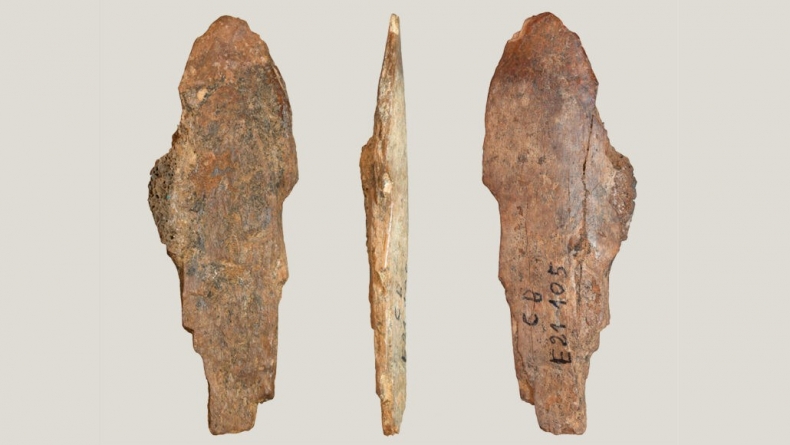-
LONDON: Indian-Origin Teen In UK Gets “Life-Changing” Cancer Treatment - 22 hours ago
-
SILICON VALLEY: All About Pavan Davuluri, New Head Of Microsoft Windows - 22 hours ago
-
LONDON: UK’s India Gate To Commemorate Role Of Indian Soldiers From World Wars - 2 days ago
-
HARARE: Shri Bramha Kumar appointed as the next Ambassador of India to the Republic of Zimbabwe - April 23, 2024
-
LONDON: Indian-Origin Principal Wins UK Legal Challenge Over School Prayer Ban - April 23, 2024
-
TORONTO: Indian-Origin Doctor Needs ₹ 2 Crore For Legal Fees. Elon Musk Responds - April 22, 2024
-
KINSHASA: India-Democratic Republic of Congo Foreign Office Consultations - April 21, 2024
-
LONDON: UK Court Allows Sale Of Nirav Modi’s Luxury London Apartment - April 21, 2024
-
TEHRAN: Travel advisory for Iran and Israel - April 20, 2024
-
LUXEMBOURG: Shri Saurabh Kumar concurrently accredited as the next Ambassador of India to the Grand Duchy of Luxembourg - April 20, 2024
RABAT: Stone Age people used bone scrapers to make leather and pelts
RABAT: Discoveries in a Moroccan cave
have provided a rare look at how Stone Age people may have turned animal skins
into clothing.
Bone
tools, including hide scrapers and stone-tool sharpeners, were unearthed in
Morocco’s Contrebandiers cave, say archaeologist Emily Hallett and colleagues.
Dating of sediment, burned stones and animal teeth excavated there shows that the tools are around 90,000 to 120,000 years old,
the scientists report September 16 in iScience.
“Prior to
major successful dispersals out of Africa and into Eurasia, Homo sapiens
[were]
making tools for various specialized functions, and those behaviors
would have aided them [in] new environments,” says Hallett, of the Max Planck
Institute for the Science of Human History in Jena, Germany. Different types of
bone tools from around the time of the Moroccan
finds have been unearthed at a handful of other African sites,
though uses for many of those items remain unclear. Researchers have largely
focused on an explosion of African bone tool styles that appeared around 44,000
years ago, after human expansions into Eurasia.
Of 62
bone implements from the cave, seven were hide scrapers. These tools were
crafted from pieces of antelope or wild cattle ribs that were split in half
lengthwise and worked into a flat, spatula-like shape. Short, deep grooves and
polish on these items resulted from scraping animal hides, the researchers say.
The team
unearthed the tools along with skinned animals’ bones. Patterns of stone-tool
incisions on limb and jaw bones of sand foxes, golden jackals and wildcats
resulted from detaching skin at the paws and pulling it over the head in one
piece, providing evidence for the way the bone hide scrapers were used, the
scientists say.
Ancient
humans could have put hides presumably worked into leather or pelts to various
uses, though clothing seems especially likely, Hallett says. DNA evidence of
body lice origins suggests that people began
wearing clothes at least 190,000 years ago























